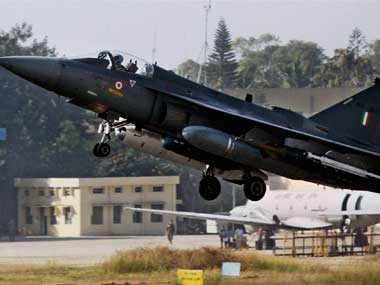Why the Light Combat Aircraft Tejas will be a game changer

Major Indian defence exporters including Russia, the United States, Israel and France need to worry as India is on course to acquire a capability it has long been working for but operational success has remained elusive. A few days ago India stepped closer to scripting history in a major defence indigenization effort: building its own fighter aircraft with stealth capabilities.
On 20 December, the Defence Research Development Organization (DRDO)-developed Light Combat Aircraft (LCA) Tejas got Initial Operation Clearance (IOC) for induction into the Indian Air Force. The event marked fruition of a long and difficult journey of three decades of efforts to make a fighter aircraft of international standards.
If all goes well, the four plus generation aircraft is likely to get the Final Operational Clearance by December 2014 and be formally inducted into the IAF. It will also be inducted into the Indian Navy in due course.
The Tejas project has cost India just Rs 7,000 crore – peanuts when compared to costs of similar aircraft in the world. The aircraft delivery is expected to commence from 2014. The DRDO is also working on making an advanced medium aircraft with twin engines.
To put things in perspective, IAF Chief NAK Browne hailed the LCA Tejas project and said the progress of such a challenging experimental project without any accident or major incident was unprecedented in the history of aviation. Incidentally, Tejas got the IOC just days before his retirement at the end of this month.
Another important factor to be borne in mind is that Tejas getting IOC has given a major boost to India’s military aviation along with the approval of several new programmes, such as Mk2 variants of Navy and Air Force; Advanced Medium Combat Aircraft; Unmanned Air Systems; Fifth Generation Fighter Aircraft and Medium Transport Aircraft.
Tejas is designed to ultimately replace the Mig-21 series of IAF fleet of IAF and the timing of its IOC coincided with the iconic Mig-21 FL fighter flying into IAF’s history just a week ago.
While granting the IOC to Tejas, Defence Minister AK Antony pointed out that the capabilities of the aircraft had been improved significantly in the past three years. “In recognition of the enhanced capabilities, IAF has decided to grant the aircraft a higher status, namely, the Initial Operational Clearance for induction into the Service,” he said.
Antony candidly admitted that he had his share of anxieties regarding the future of LCA ever since he had taken over as defence minister in 2006 but was happy to put behind the moments of self-doubt, frustrations and setbacks of past 30 years.
“The improvements to the aircraft have enhanced the flight envelope of the aircraft and also weapon delivery capability of the aircraft. The performance at Iron Fist, Jaisalmer and the recent missile firing at Goa are examples of such improvements. The reliability of the aircraft and serviceability has also been enhanced. The number of flights nearing 500 within this year provides an indication of this. Operating at IAF bases namely, Jamnagar, Jaisalmer, Uttarlai, Gwaliar, Goa, Leh, Pathankot demonstrate the aircraft capability to operate from Air Force bases. There have also been occasions when the same aircraft has flown thrice on the same day, indicating the operational reliability of this home-bred fighter aircraft,” Antony observed while giving the IOC to Tejas in Bengaluru on 20 December.
Tejas is the smallest, light weight, single engine, single seat, and supersonic, multirole, combat aircraft. Defence ministry’s chief spokesperson Sitanshu Kar has described it as “one of the best in its class in the world” and said its four variants, including combat, trainer and naval, are being developed for land and carrier borne operations.
Kar gave out some key features of Tejas remarking thus: “The quadruplex digital fly-by-wire flight control system ensures acceptable handling qualities while ensuring adequate safety throughout the flight envelope. The advanced Glass cockpit open architecture system complements piloting.”
When Tejas got its first IOC on 10 January 2011, it still suffered from some rough patches as the aircraft had a few limitations in terms of Combat performance, turn- around time and its weaponisation which had to be refined and improved. Till date, more than 2450 sorties have been completed to achieve the flight test goals towards IOC-2 and the design issues were resolved.
Tejas has the Multi Mode Weapon multirole capability, can fire Laser Guided Bombs, has passed all the tests for “All Weather Clearance” and has been cleared for fly without any telemetry support. It will enable the IAF to carry out air superiority and offensive air support missions, forward air field operations, all weather multi role operations, electronic counter measures and night flying operations.
Moreover, Tejas is capable of flying non-stop to destinations over 1700 km away and its Radius of Action is up to 500 km depending upon the nature and duration of actual combat.
Tejas marks an important chapter in the annals of Indian defence industry towards self-reliance. The development also opens up an opportunity for India’s public and private sector to work in tandem to develop and produce world-class military systems of the highest quality.
You May Be Interested IN